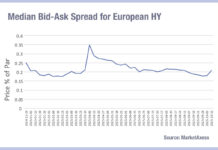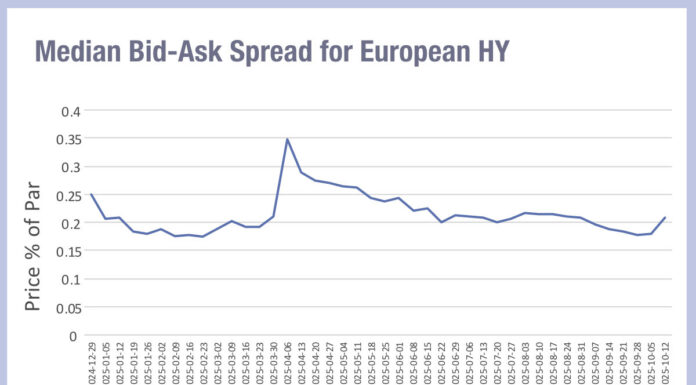 The need to optimise execution quality is increased as buy-side firms seek to optimise all-to-all trading, and therefore price making, in credit. Transaction cost analysis (TCA) is a key measure to support this, but it needs to be set-up and applied carefully.
The need to optimise execution quality is increased as buy-side firms seek to optimise all-to-all trading, and therefore price making, in credit. Transaction cost analysis (TCA) is a key measure to support this, but it needs to be set-up and applied carefully.
While a number of benchmarks are available for use from each trading platform, traders note that ‘availability bias’ tends to guide their use more than the quality of their performance, making ‘free’ or publicly available data most commonly used as the first call benchmark. While some firms will be able to access a range of benchmark on different platforms, their value can be quite different in certain markets as dealers will report their trades differently, affecting the quality of the underlying data.
“If you are a price maker, then you probably are more willing to pay for a tool that gives you a better level of insight and pricing,” noted one trader, citing the value of consolidated and AI managed pricing feeds.
More liquid credit markets also see engagement with streamed prices from dealers, which can help to find a price point for trading.
Another aspect is the capacity to assess the timing of orders, based on timestamps, including arrival times, placing out to market times, and execution times, to benchmark a trade effectively throughout its lifecycle.
“The value depends on the kind of asset class you are trading,” says one trader. In a highly liquid bond market you might want to measure a slippage from when that trade hits your blotter as the portfolio manager releases it. That’s the time that they might want to get the risk on. However, they might release a trade to you, that you then have to discuss with them, how they want to approach the risk for example, so there’s various different ways of looking at a TCA benchmark.”
However, valuing a bond is, in itself, not a clear cut issue.
“On less liquid bonds, I don’t know the perfect way to do it,” notes another trader. “How do you benchmark a bond that hasn’t traded in four days, aside from going on RFQ and going to 20 dealers and using the three responses you get back?”
The risk of relying on a benchmark without using a trader to assess that information point, is that the many dynamics of bond trading require a qualitative assessment, and context, to make sense of that point.
“People often look at it in through an equity lens, and that might work for Verizon 10-year bonds,” the trader notes. “But those types of bonds are maybe 5% of our addressable securities.”
Collectively then, traders should try to find several points of reference in order to benchmark credit trades in measuring price and timing, and then ensure that they are only brought into focus through the eye of a experience to ensure their appropriateness.
©Markets Media Europe 2024
©Markets Media Europe 2025















